You don’t lose sales because your product isn’t good.
You lose them because your product isn’t there when your customer wants it.
That’s the weak spot in many e-commerce stores, causing stockouts and overstocks.
In 2025, the smartest merchants aren’t waiting for problems to happen. They’re using replenishment tools that forecast demand, automate reorders, and give them full control over their inventory.
In this blog, we’ll break down the top inventory replenishment tools trusted by Shopify merchants, DTC brands, wholesalers, and enterprise teams.
We’ll cover what they’re best at, their key strengths, and pricing so you can find the one that fits your growth story.
Why Automated Inventory Replenishment Matters for eCommerce and Retail
Inventory replenishment used to mean gut feeling, spreadsheets, and last-minute supplier calls. But modern eCommerce moves too fast for guesswork.
Automated replenishment changes the game by:
- Eliminating stockouts — bestsellers never “run out.”
- Preventing overstocking — less cash trapped in slow movers.
- Saving time — no more manual calculations for every SKU.
- Improving forecasting — smarter planning based on actual sales and lead times.
It’s the difference between constantly reacting to problems and staying five steps ahead.
What to Look for in a Good Replenishment Tool
The best replenishment tools don’t just send you alerts, they think ahead for you. They quietly run in the background, making sure your fast-moving products never surprise you with a “sold out” moment and your slow movers don’t eat up precious cash.
Before choosing one, make sure it checks these boxes
- Real-Time Inventory Visibility
You should always know what’s in stock, what’s running low, and what’s on its way without digging through multiple spreadsheets or systems.
- Smart Reorder Point Calculations
The best tools calculate reorder points automatically using sales velocity, safety stock, and supplier lead times. No more guesswork.
- Low-Stock Alerts and PO Suggestions
You shouldn’t have to hunt for what needs to be reordered. Your system should tell you, and ideally, create the PO in a click.
- Demand Forecasting Capabilities
Replenishment isn’t just reacting to low stock; it’s planning ahead. Forecasting ensures your stock levels match upcoming demand.
- Easy Integrations
Whether you sell on Shopify, Amazon, or multiple channels, the tool should sync seamlessly with your existing systems.
- Multi-Location Support
If you have more than one warehouse or retail location, the tool should help you manage replenishment across all of them, not complicate it.
Sumtracker
Sumtracker is designed specifically for Shopify and marketplaces like Amazon, Etsy, and Walmart, it acts as a real-time control center for your stock. Instead of reacting to stockouts, Sumtracker predicts demand, calculates reorder points, and automates purchase orders so you can stay ahead of your bestsellers.
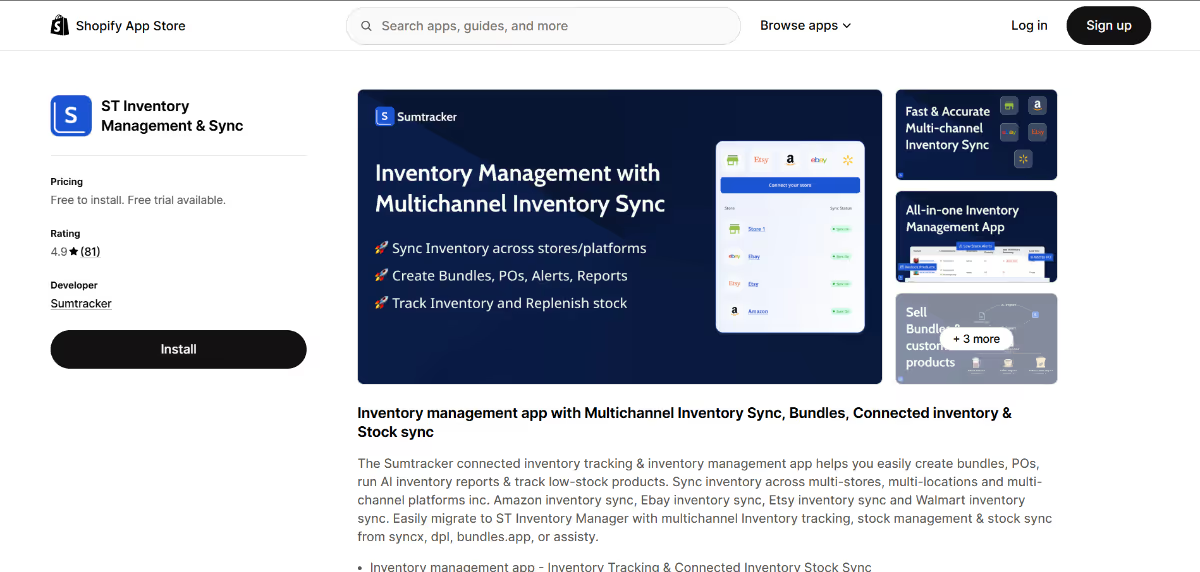
Key Features:
- Real-time inventory sync across Shopify, Amazon, Etsy, Walmart & more
- Automated reorder points and restock suggestions
- Demand forecasting using sales trends and lead times
- One-click PO creation and low-stock alerts
Best For: Shopify and multichannel sellers who want simple, powerful replenishment automation.
Pricing: Starts at $49/month.
Pros:
- Super easy to set up and use
- Excellent Shopify and marketplace integrations
- Accurate stock sync and forecasting
Cons:
- Focused more on retail than complex manufacturing
Inventory Planner
Inventory Planner helps businesses make smarter purchasing decisions with data-driven forecasts and automated reorder logic. The platform’s strength lies in its flexibility and detailed reporting, making it ideal for brands with large catalogs or seasonal demand patterns.
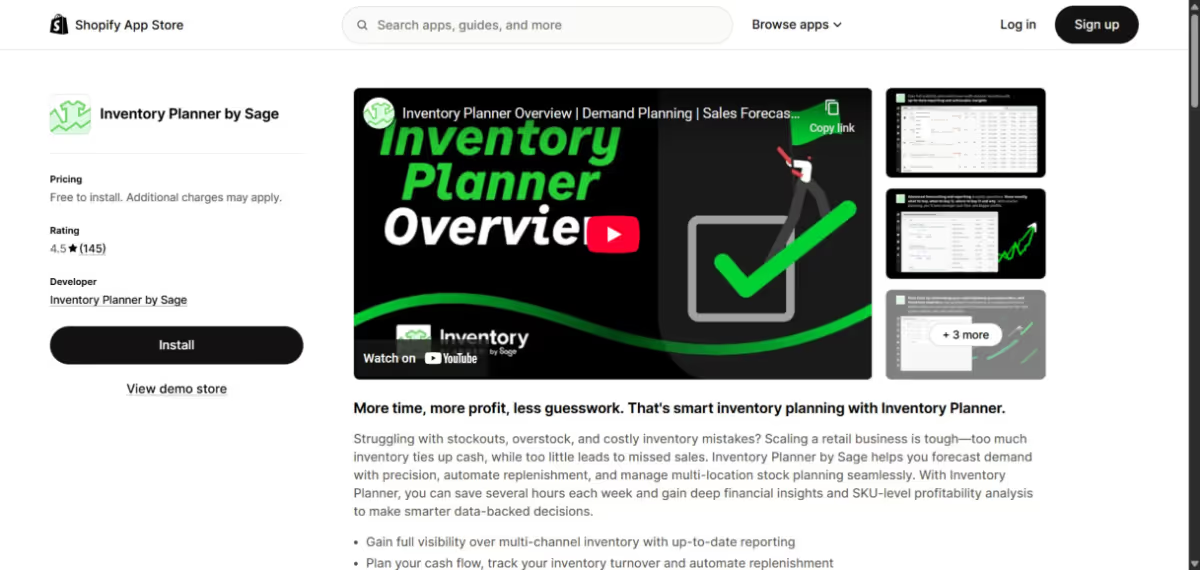
Key Features:
- Advanced demand forecasting
- Replenishment and PO planning
- Multi-channel inventory visibility
- Customizable reporting and budgeting
Best For: Medium to large retailers managing big product catalogs or seasonal demand.
Pricing: Quote-based.
Pros:
- Strong forecasting engine
- Highly customizable reports
- Works well for complex retail environments
Cons:
- Learning curve for new users
- Interface can feel overwhelming for smaller teams
Prediko
Prediko It turns your sales data into clear, actionable replenishment plans. For fast-moving DTC brands that need speed and clarity, Prediko offers a clean, lightweight experience that focuses on what matters most: staying in stock without overordering.
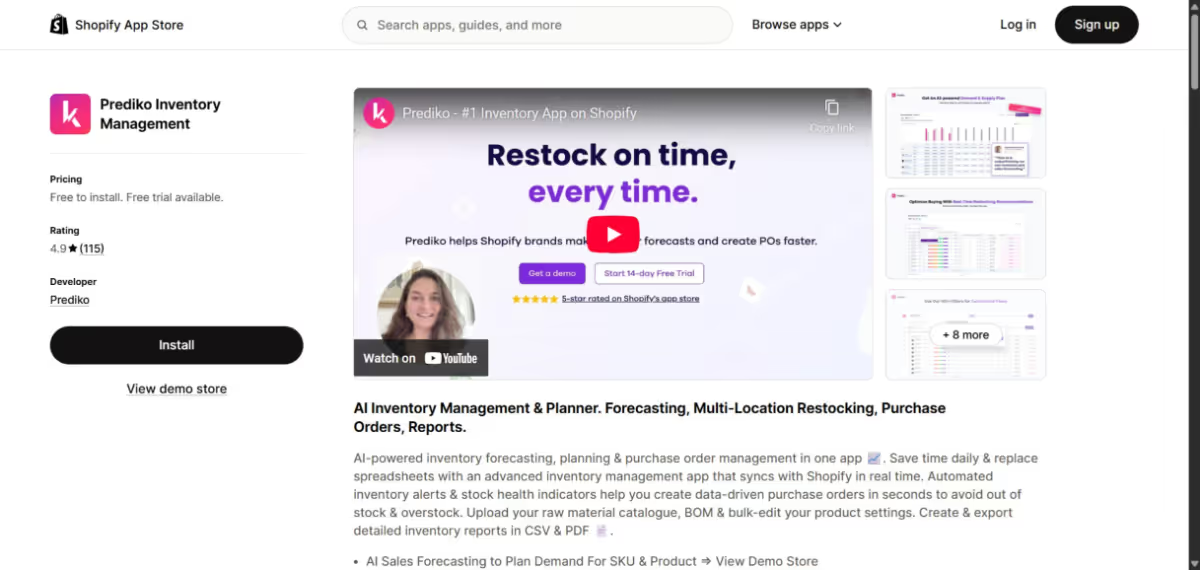
Key Features:
- AI-powered demand forecasting
- Automated reorder recommendations
- Shopify-first integration
- Easy-to-read dashboards
Best For: DTC Shopify brands wanting fast, smart forecasting without complexity.
Pricing: Starts $49/month.
Pros:
- Very easy to implement
- Clean and modern UI
- Great for fast-moving Shopify stores
Cons:
- Limited flexibility for complex operations
- Smaller feature set compared to enterprise tools
Cogsy
Cogsy connects demand forecasting directly with replenishment so fast-growing DTC brands can plan purchases without endless spreadsheets. Built for Shopify sellers, it turns live sales signals into clear, cash-aware reorder actions.
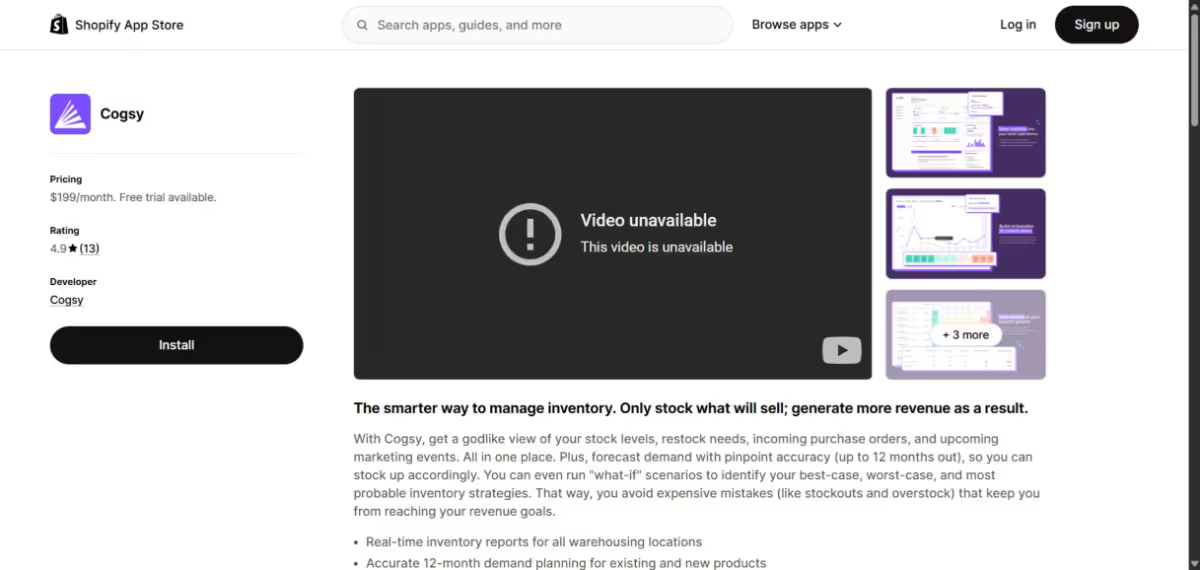
Key Features:
- Forecasting and scenario planning
- Automated POs
- Budget and cash flow visibility
- Shopify integration
Best For: Fast-growing DTC brands scaling operations and demand planning.
Pricing: Starts around $199/month.
Pros:
- Excellent financial forecasting layer
- Clean reporting interface
- Ideal for high-growth Shopify brands
Cons:
- Limited functionality for multi-location operations
- Not ideal if your business relies on advanced warehouse workflows
Fabrikator
Fabrikator is a Shopify-native replenishment tool built for merchants who want something simple, fast, and intuitive. It’s designed to remove the guesswork from reordering by combining lead time tracking, sales data, and clean forecasting dashboards.
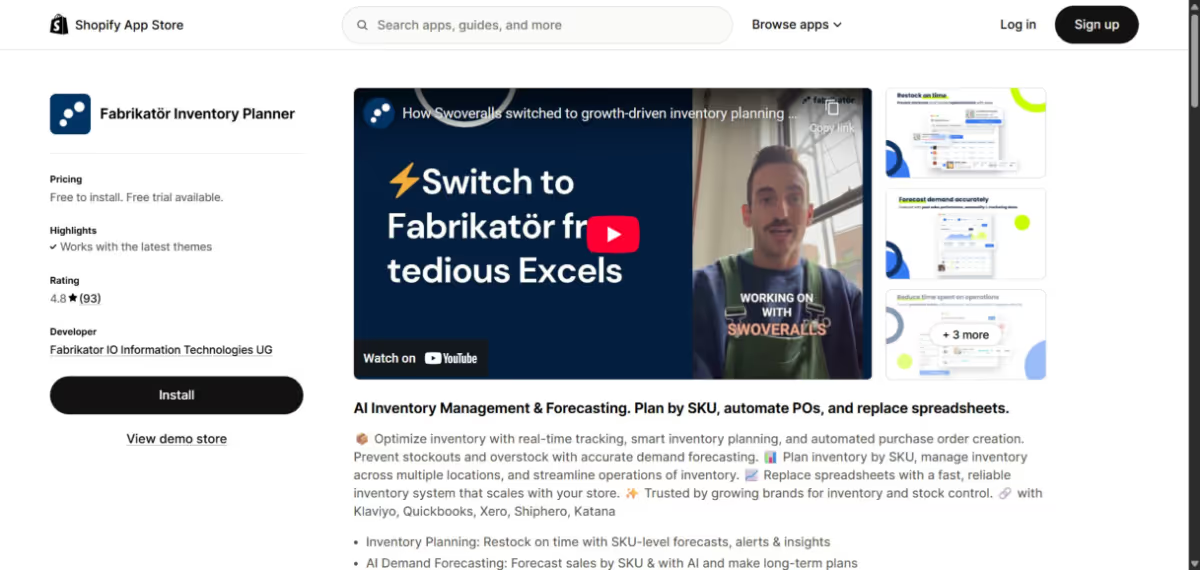
Key Features:
- Demand forecasting and restock recommendations
- Simple lead time management
- Easy reporting and insights
- Shopify-native setup
Best For: Small to mid-sized Shopify merchants who want a lean, fast tool.
Pricing: Starts at $79/month.
Pros:
- Quick onboarding
- Very simple and intuitive UI
- Works seamlessly with Shopify
Cons:
- Not ideal for multichannel
- Lacks advanced customization
Cin7 Core
Cin7 Core is a powerhouse inventory solution for businesses that need serious operational control. It combines advanced stock management with replenishment automation, making it a popular choice for brands managing multiple warehouses, channels, and complex workflows.
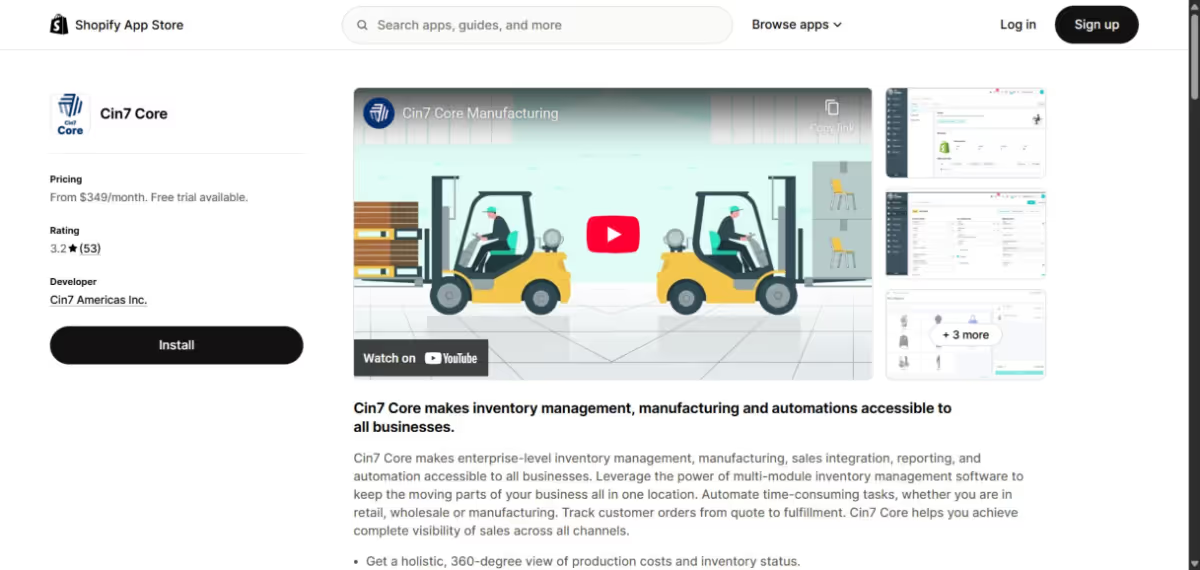
Key Features:
- Automated reorder point calculation
- Multi-warehouse and channel management
- Supply and production planning
- Accounting and ERP integrations
Best For: Mid to large retailers and wholesalers with complex operations.
Pricing: Starts at $349/month.
Pros:
- Deep inventory and replenishment features
- Great scalability
- Strong integrations
Cons:
- Steep learning curve
- Higher starting cost
Unleashed Software
Unleashed Software is a strong choice for wholesalers and manufacturers that need replenishment tied into production operations. It connects stock control with BOMs and forecasts, ideal for businesses that build or bundle items.
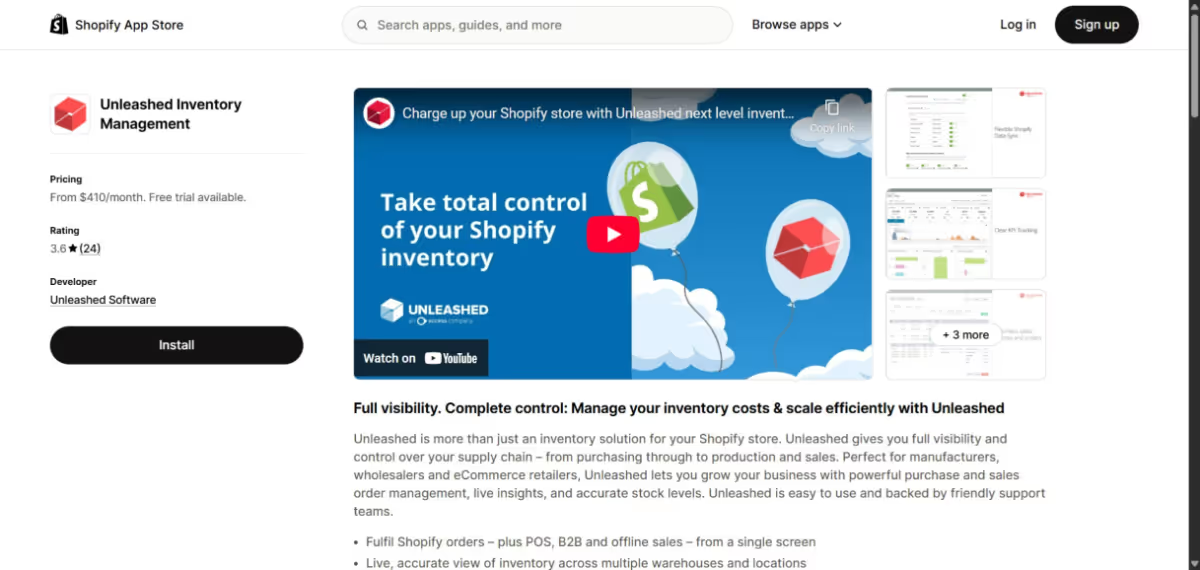
Key Features:
- Replenishment and forecasting tools
- Real-time stock tracking
- Bill of Materials (BOM) and production support
- Advanced analytics
Best For: Wholesale and manufacturing businesses with complex supply chains.
Pricing: Starts at $410/month.
Pros:
- Excellent for manufacturing and wholesale
- Strong reporting capabilities
- Scalable for growing businesses
Cons:
- Longer setup time
- May feel heavy for small merchants
Zoho Inventory
Zoho Inventory is a budget-friendly replenishment solution that makes automation accessible to smaller businesses. It’s perfect for sellers who already use Zoho tools or want a simple way to automate basic reorder points.
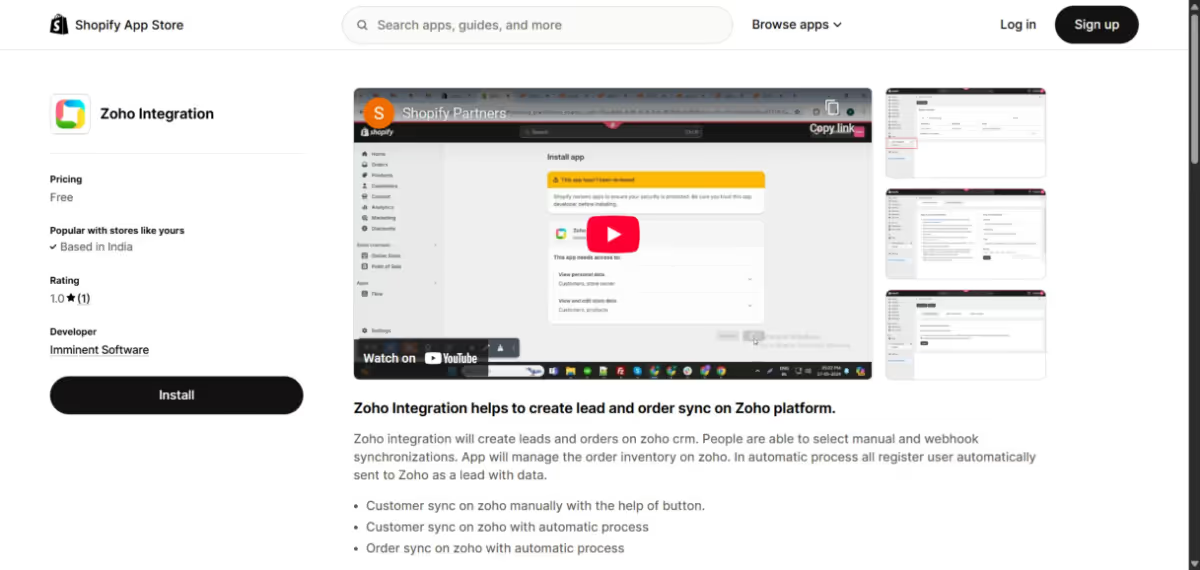
Key Features:
- Reorder point automation
- Multi-warehouse support
- Basic demand forecasting
- Integration with Zoho apps
Best For: Small to medium sellers already using Zoho tools.
Pricing: From $29/month.
Pros:
- Affordable pricing
- Easy to use and set up
- Good for entry-level replenishment
Cons:
- Forecasting is basic
- Limited functionality for complex operations
Finale Inventory
Finale Inventory is built for high-volume sellers managing inventory across multiple warehouses. It’s designed for precision replenishment and operational control, making it popular with wholesalers and brands with advanced logistics.
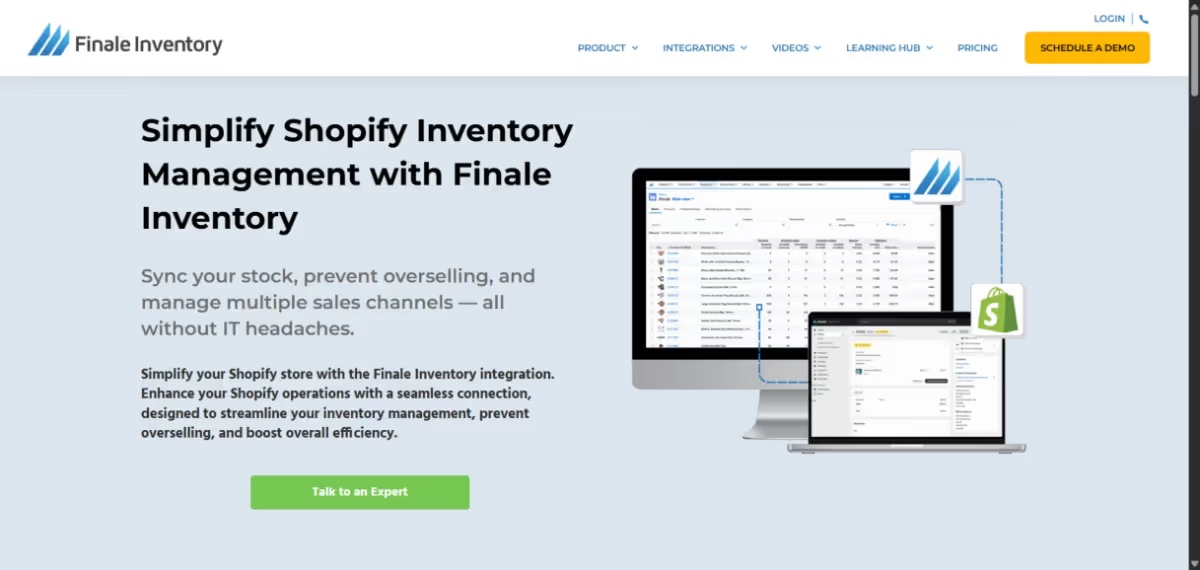
Key Features:
- Multi-warehouse replenishment management
- Real-time channel sync
- Advanced PO workflows
- Forecasting and reporting tools
Best For: High-volume sellers, wholesalers, and operations-heavy teams.
Pricing: Starts at $499/month.
Pros:
- Strong operational control
- Excellent for multi-location businesses
- Great for scaling logistics-heavy brands
Cons:
- Higher price point
- Steeper learning curve
NetSuite ERP
NetSuite ERP isn’t just a replenishment tool, it’s a full ERP system. Designed for large, complex businesses, it integrates forecasting, inventory, purchasing, finance, and more. It offers unmatched control and customization, but also requires significant investment and time to implement.
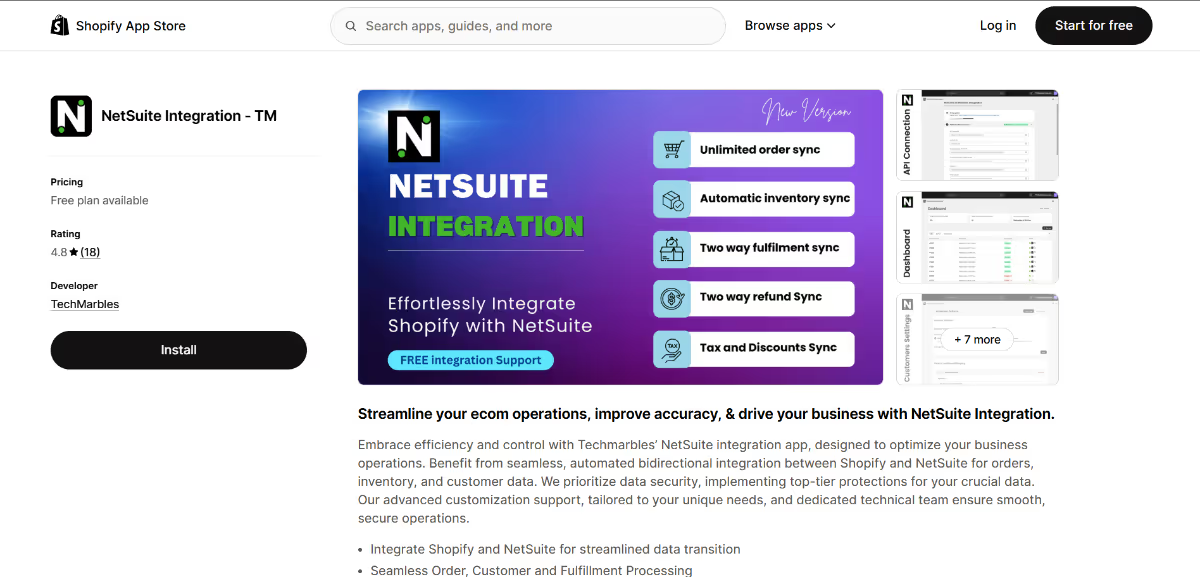
Key Features:
- Advanced forecasting and planning
- Full ERP integration
- Supplier and lead time management
- Custom workflow automation
Best For: Large enterprises with complex supply chains.
Pricing: Quote-based.
Pros:
- Extremely powerful and customizable
- All-in-one ERP + inventory solution
- Ideal for complex operations
Cons:
- High implementation cost and time
- Not suited for smaller businesses
Blue Ridge
Blue Ridge is an enterprise-grade forecasting and replenishment platform built for retailers and distributors managing large, complex supply chains. Its AI engine helps businesses stay ahead of demand fluctuations and supplier variability, making it a favorite among big retail networks.

Key Features:
- AI-powered forecasting
- Automated replenishment
- Supplier collaboration features
- Advanced analytics and optimization
Best For: Enterprise retail and wholesale networks.
Pricing: Quote-based.
Pros:
- Best-in-class forecasting capabilities
- Strong supply chain collaboration tools
- Ideal for high-volume operations
Cons:
- Not built for smaller teams
- Implementation complexity
Conclusion
Inventory replenishment is the heartbeat of a healthy retail business. Whether you’re running a fast-moving Shopify store or a complex multi-location operation, the right tool can be the difference between smooth scaling and painful stockouts.
Tools like Sumtracker make replenishment simple and fast for Shopify and marketplace sellers, while enterprise options like NetSuite ERP or Blue Ridge bring advanced capabilities for large networks. The key is to choose software that matches your operational complexity.
If you’re a growing Shopify or multichannel brand, Sumtracker gives you the real-time sync, forecasting, and PO automation you need without unnecessary overhead. It’s the kind of system that runs quietly in the background so you can focus on selling, not stock counting.
Try Sumtracker free for 14 day!
FAQS
Which is the best inventory replenishment tool for Shopify merchants?
For most Shopify merchants, Sumtracker stands out because it’s built specifically for Shopify and marketplace sellers. It combines real-time stock sync, forecasting, and PO automation without the complexity of enterprise systems.
What features should I look for in a replenishment tool for eCommerce?
The most important features include real-time inventory sync, automated reorder points, forecasting, low-stock alerts, and multi-location support. If you sell on multiple channels, seamless integrations are essential.
Can replenishment tools help avoid overselling across channels?
Yes. If you sell on multiple platforms like Shopify, Amazon, or Etsy, a good replenishment tool keeps stock levels synced across every channel. That means one sale updates all listings, preventing duplicate or oversold orders.
How do I know if it’s time to upgrade from manual replenishment to software?
If you’re missing sales due to stockouts, constantly chasing suppliers, managing multiple channels, or spending hours every week updating spreadsheets, it’s a clear sign your business has outgrown manual replenishment.
Conclusion
Ready to Simplify Your Inventory Management?
Join hundreds of e-commerce merchants who rely on Sumtracker to save time, eliminate errors, and grow their business.
.svg)



.png)